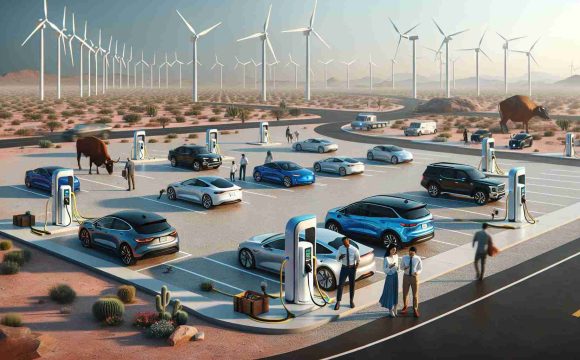Japan’s recent Hydrogen Society Promotion Act, effective October 23, is shaking up the energy sector. Designed to encourage low-carbon hydrogen production, this legislation aims to bridge the cost gap between hydrogen and traditional fuels, promoting significant investments in infrastructure across the nation. Despite delays in implementation, Japanese firms remain eager to tap into the hydrogen market, leading to keen international competition, especially in Australia.
Across the ocean, Australia is re-evaluating its hydrogen strategy. The Albanese government’s updated National Hydrogen Strategy emphasizes green hydrogen production over its blue counterpart, reflecting a shift toward renewable energy sources. However, high energy costs have caused several companies to pull back from ambitious hydrogen projects. Kawasaki Heavy Industries, for example, is reassessing its plans due to construction delays and regulatory hurdles.
In Queensland, Kansai Electric Power has stepped away from a major green hydrogen initiative, citing profitability concerns amidst soaring electricity prices. Other firms, including Origin Energy, are also scaling back plans, signaling potential challenges for Australia’s vision of becoming a global hydrogen powerhouse.
As major players reevaluate their involvement and face rising costs, questions emerge about the future of hydrogen energy. The quest for cleaner alternatives continues, but the path may be fraught with unexpected challenges and industry adjustments.
Is Hydrogen the Future of Energy? Insights into Japan and Australia’s Hydrogen Strategies
Understanding the Impact of Japan’s Hydrogen Society Promotion Act
Japan’s Hydrogen Society Promotion Act, which came into effect on October 23, marks a pivotal moment for the energy landscape in the country. This legislation is specifically designed to bolster low-carbon hydrogen production, potentially positioning Japan as a leader in hydrogen technology and infrastructure. By incentivizing investments, the Act seeks to address the cost disparities between hydrogen fuel and traditional energy sources, which could lead to widespread adoption of hydrogen in various sectors including transportation, manufacturing, and power generation.
Key Features of the Hydrogen Society Promotion Act
1. Incentives for Low-Carbon Hydrogen Production: The Act will provide financial support and incentives to companies engaged in the production of low-carbon hydrogen, aiming to lower production costs.
2. Investment in Infrastructure: Significant investments are being directed towards developing the necessary infrastructure for hydrogen production, storage, and distribution.
3. International Collaboration: The Act encourages collaboration with international partners, notably with countries rich in renewable energy resources, to facilitate the import and use of hydrogen.
Australia’s Strategic Shift: Emphasis on Green Hydrogen
In response to global trends, Australia is reassessing its hydrogen strategy. The updated National Hydrogen Strategy under the Albanese government reflects a growing emphasis on green hydrogen, produced from renewable sources rather than fossil fuels. This strategic pivot is designed to align with global decarbonization goals, positioning Australia as a key player in the international hydrogen market.
Innovations in Australia’s Hydrogen Market
– Precision Energy Management: Innovative strategies for managing energy use in hydrogen production are being explored to mitigate the impact of high energy costs.
– Public-Private Partnerships: Increasing collaboration between governmental bodies and private enterprises is aimed at addressing regulatory and financial challenges.
Challenges Facing Australia’s Hydrogen Aspirations
Despite the ambitious plans for hydrogen production, several obstacles have arisen:
– High Energy Costs: Escalating electricity prices are causing companies like Kansai Electric Power and Origin Energy to retreat from significant hydrogen initiatives due to concerns over profitability.
– Regulatory Hurdles: The complexities of regulatory compliance are hindering the swift advancement of proposed hydrogen projects, making them less viable in the short term.
Market Analysis and Future Prospects
The evolving landscape of hydrogen energy presents both opportunities and challenges. As companies navigate high costs and regulatory landscapes, the potential for innovation remains. Future trends may include:
– Cost Reduction Innovations: Technological advancements may lead to significant reductions in the cost of hydrogen production, making it more competitive with fossil fuels.
– Sustainability Focus: Increased consumer demand for sustainable energy solutions is likely to drive investments in cleaner hydrogen technologies.
– Global Competition: With Japan and Australia positioning themselves as global leaders, international competition will intensify, particularly with nations like Germany and South Korea also investing heavily in hydrogen infrastructure.
Conclusion
The journey towards a hydrogen-based energy future is complex and filled with uncertainties. While Japan’s Hydrogen Society Promotion Act sets the stage for increased production and investment, Australia’s challenges underline the volatility in today’s energy markets. Continuous innovation, strategic collaborations, and a focus on cost reductions will be crucial in realizing the full potential of hydrogen as a clean energy source.
For more information on the hydrogen energy sector, visit hydrogen.gov.au.






